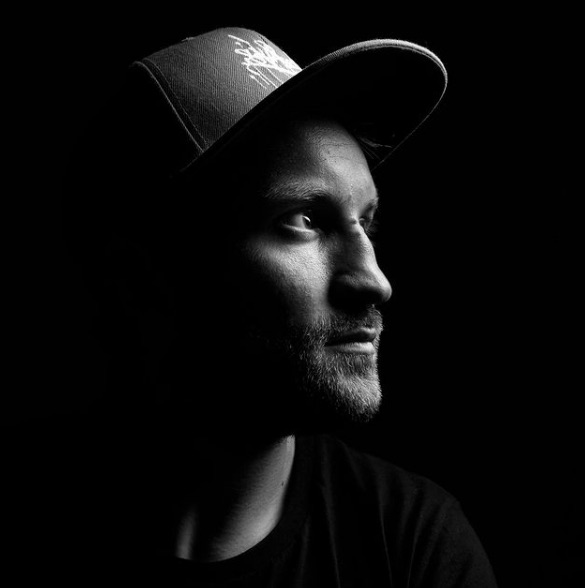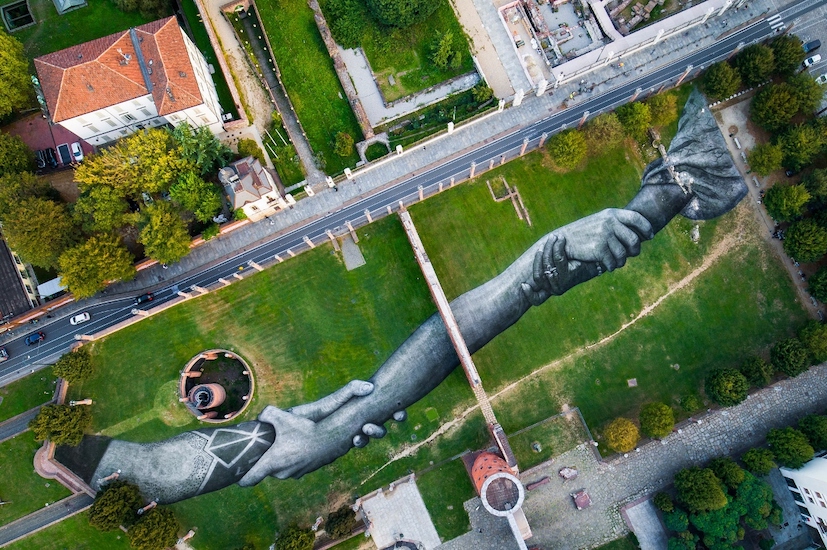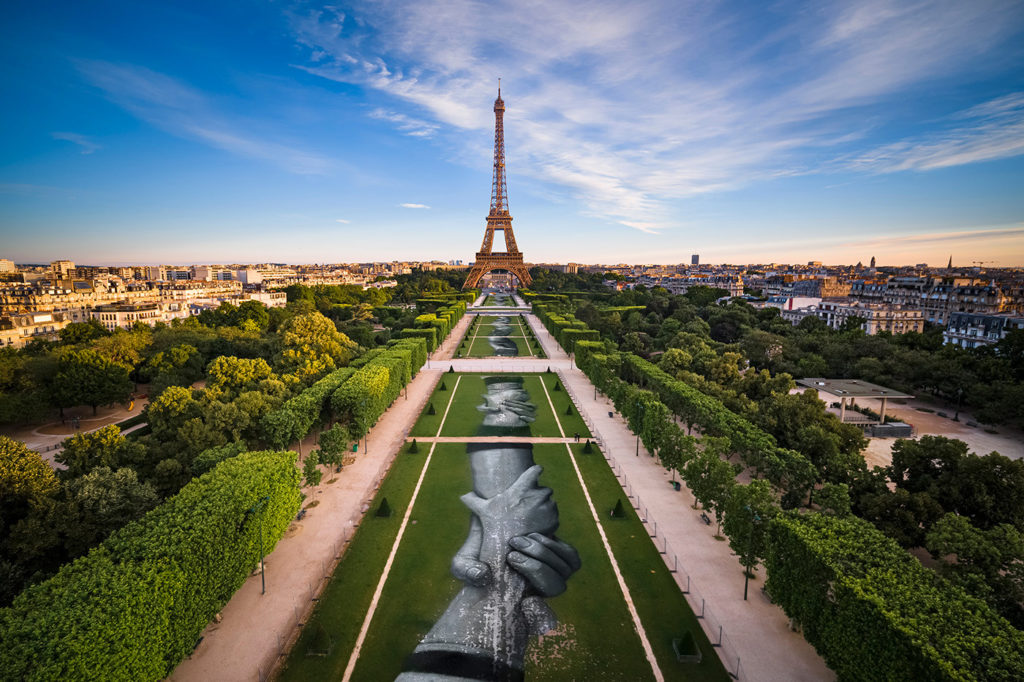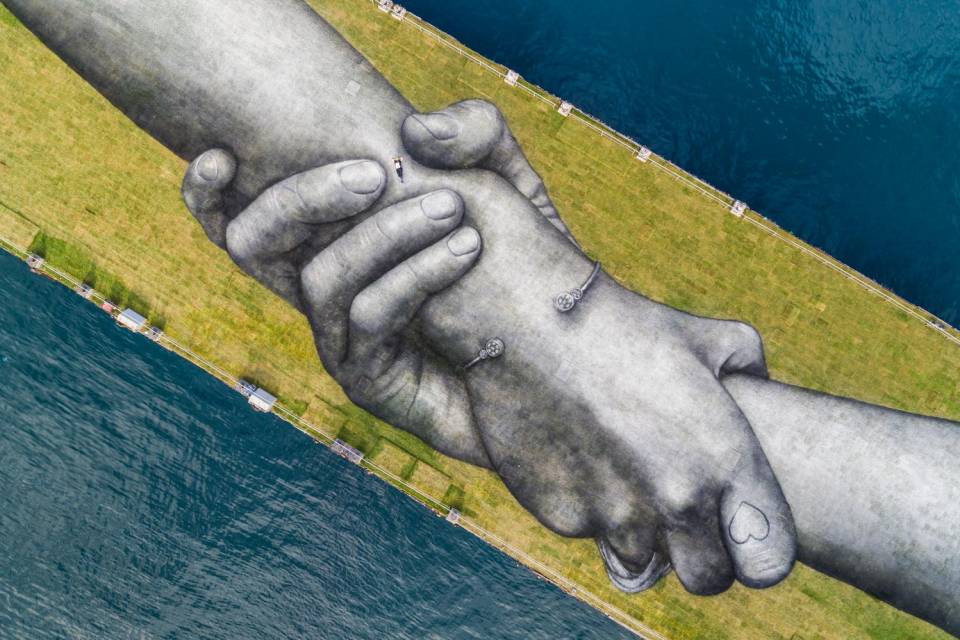Saype’s hands
Guillaume Legros, is counted among the most influential artists under 30 according to Forbes.
His stage name is Saype, a fusion of the words say and peace, and he was born as a graffiti artist in 2012, then has naturally evolved towards land art.

Saype – Instagram Saype Artist
A convinced supporter of art for the community and bored with the one inside museums, his works are gigantic drawings made on huge lawns and only with biodegradable materials: the colors – black and white – are obtained respectively from plaster and coal for a zero environmental impact.
Saype arrived in Italy ,in Turin to be precise, thanks to the “Beyond the walls” project which will last until 2024. The project, which started in 2019, consists in the creation of the largest chain of hands – designed – around the world: before the Piedmontese city, Saype “united” Paris, Geneva, Andorra, Berlin and numerous other cities.

Saype – Turin, Courtesy of Artribune
The hands
Allegories par excellence of help and support, according to the French artist, hands help to understand both the stories of people and places and his hands cling to each other.
“A work that makes itself understood, this really touches me. I am more sensitive to ancient art, which is more figurative, because there is no need for big speeches to understand it. When we manage to move something with art, with my art, we have won, the goal is achieved. ” – Saype to Domus Magazine

Saype – Paris , Courtesy of Saype
Immediacy, therefore, is the keyword.
There are no big words or thoughts around Saype’s artworks but only what you see, it is an art that does not need explanations or particular effort to be understood.
The hands are “ephemeral” artworks, in most cases the parks where they are made are open to the public and people can walk on them, affecting their duration which in any case is also subject to the laws of nature, such as the weather, the season or grass growth.
And that’s right: philosophically speaking, as life ends, so the artwork is destined to disappear at the end of its cycle.

